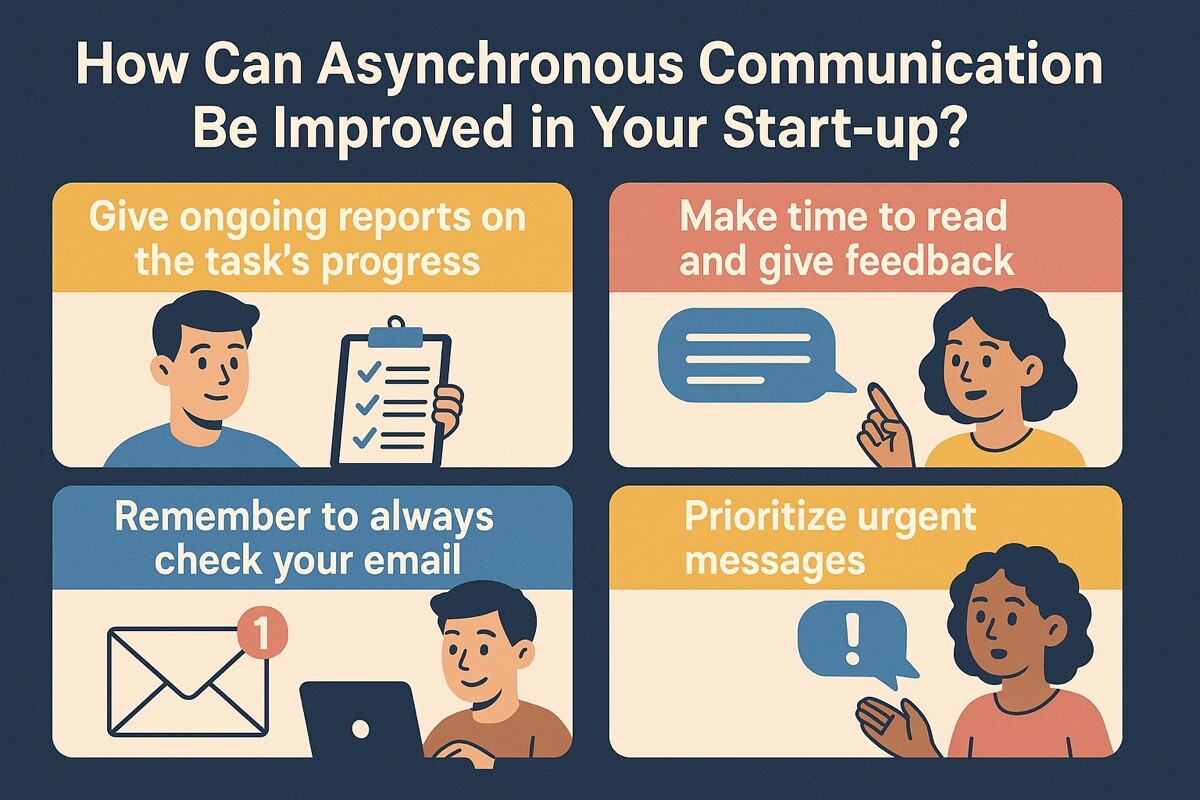
How Can Asynchronous Communication Be Improved in Your Start-up?
Startups that operate remotely are more likely to employ workers from different parts of the globe with varying time zones. This means that employees on the same team can work at different times of the day. So, with the varying time zones, teammates are likely to have communication challenges with their colleagues. This is why we often advise remote startups to implement asynchronous communication.
With asynchronous communication, teammates can easily communicate on a non-immediate basis, allowing team members to respond to messages at a more convenient time. But beyond implementing asynchronous communication, remote startups can take advantage of various strategies to improve asynchronous communication in their workplaces. So, in this post, I’ll talk about some fun ways that remote startups can improve their asynchronous communication.
Give ongoing reports on the task’s progress
Don’t wait until you’ve finished something before sharing it with others. Choose a platform for publishing your work and keep an up-to-date version of the project or document you’re working on. Send a link to your team’s work and invite people to leave comments with specific questions for specific team members. Furthermore, if the tool you’re using allows it, you should close out comments as issues with them are rectified. It can be highly confusing and difficult to manage a project with tens or hundreds of open comments.
Make time to read and give feedback
When you start tagging individuals in comments, you’ll notice that you’re getting a lot of notifications about other people’s comments. Keep them organized in your inbox, and set out time on your calendar to read them and reply to any concerns or comments. Although it may appear that analyzing comments takes a substantial amount of time, it takes significantly less time than attending meetings to discuss or go over any of the projects.
Remember to always check your email
In my opinion, email remains one of the most effective means of asynchronous communication. There are a few simple recommendations that you should try to follow to avoid your emails getting ignored in other people’s inboxes.
Always keep an email subject to a single query or topic at a time. If you send an email with two questions, the recipient will most likely answer only one of them, and you will have no control over which question they respond to.
Always respond to emails, even if all you can say is “Thank you!” Any response is appreciated. It shows that you read what was written, and it improves the possibility that people will contact you since they know you take their words seriously and value them. When possible, end email threads by responding to everyone with the resolution, stating what modifications or adjustments were made, and clarifying the steps taken. If the conversation keeps going off track, it might be best to call a meeting to talk about it.
Prioritize urgent messages
Even though I rely mainly on asynchronous cooperation, there are times when I have no alternative but to communicate in real-time. Making the distinction between urgent and non-urgent messages is critical in asynchronous communication. There is always a need for urgent communication, whether in the office or working remotely. However, most things are not urgent and should not be treated as such. This will waste colleagues’ time and cause conflict inside the team. Allow it to wait if it can, and group non-urgent communication together. Then, because email is a less priority mode of communication than other business communication tools, send it via email. The team behind Gamma Group says that reliable B2B communications products can help businesses create clear, streamlined communication systems that support both real-time and asynchronous needs. Choosing the right tools can reduce confusion, improve collaboration, and help your team stay focused on what matters most.

